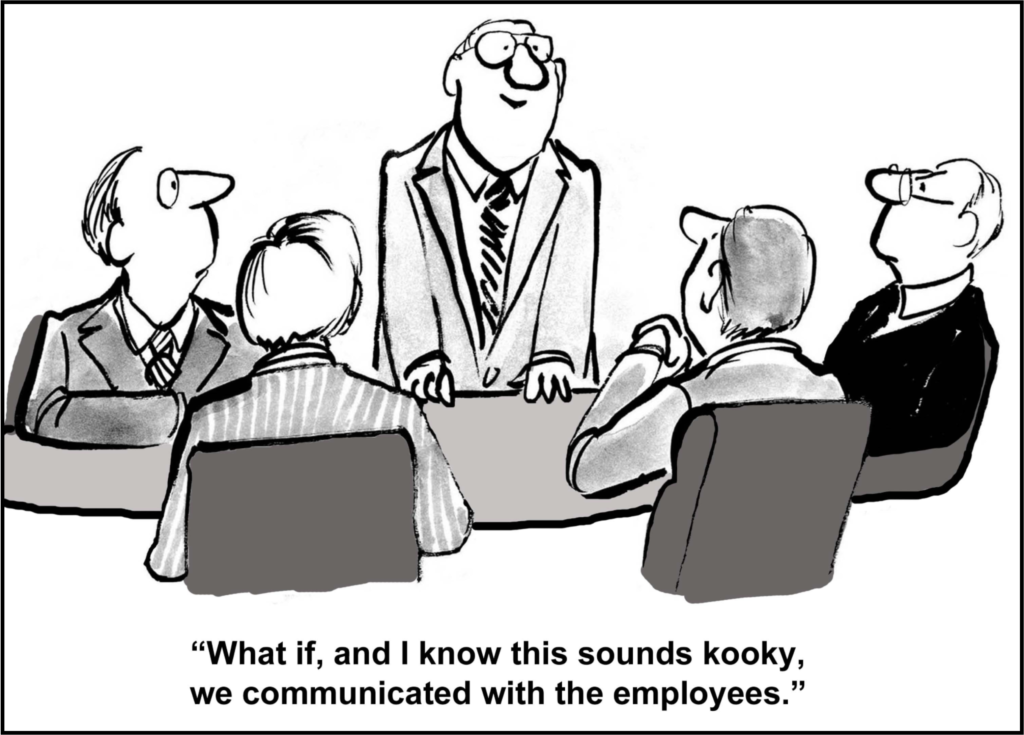Are your employees meeting your organization’s standards and goals or just barely reaching minimum expectations? Are you seeing a decline in resident satisfaction? Are operations just not up to par and not sure why? One issue you must investigate is communication. Are goals and decisions getting communicated effectively and completely to those down the line? Can your front-line employees restate policies, procedures, and goals as well as how and why these things apply to them?
The decisions you make at the top are important but they will not matter much if the actions of  those employees on the “front lines” do not line up with those decisions. Employees need to be, MUST be, invested and informed: Do they know your organization’s mission? Do they realize how they speak to or interact with people affect that mission? Are employees getting proper feedback on their performance in regards to company standards? Upper management needs to communicate goals, missions, and reasons behind decisions that affect employees. If decisions seem random to employees, they are less likely to embrace them and support them. If employees can see how decisions improve service, improve resident satisfaction, improve business and therefore benefit them in some way, they are more likely to support you in these decisions.
those employees on the “front lines” do not line up with those decisions. Employees need to be, MUST be, invested and informed: Do they know your organization’s mission? Do they realize how they speak to or interact with people affect that mission? Are employees getting proper feedback on their performance in regards to company standards? Upper management needs to communicate goals, missions, and reasons behind decisions that affect employees. If decisions seem random to employees, they are less likely to embrace them and support them. If employees can see how decisions improve service, improve resident satisfaction, improve business and therefore benefit them in some way, they are more likely to support you in these decisions.
On the reverse side, can employees reasonably incorporate expectations into their daily routines? Are the policies and procedures handed down to your front-line employees realistic? Are you asking already overworked employees to do more, take on even more than they already have time for? Again, communication is key. Get with your employees and get feedback on new initiatives you are handing down to them. How do they see these affecting their work? Do they feel it will make the difference you say it is going to make? Are these initiatives resident centered or business centered? Those employees involved directly with the residents may give a different perspective or creative ways to implement actions those in corporate may not have thought of. Keep in mind, while something looks good on paper in the boardroom, implementation may be more complicated in the day to day operations of a resident-centered facility.
Another thing to consider: Do employees report to more than one supervisor or manager? This can be complicated when each supervisor has different priorities. Make sure priorities and tasks are consistent for each employee and there is not a conflict of “whose requests should I make a priority.” Again, communication on ALL levels as well as communication going both up and down the organizational ladder will make for a more cohesive workgroup and increase the likelihood of meeting and even exceeding goals.
MDS can help evaluate where your organization stands with a comprehensive operational analysis. A follow-up strategic planning session or retreat can help make sure your current business goals are on track and develop new and innovative ideas.
Kim Jimenez has been a regular contributor to the MDS website and MDS blog for the past 15 years. Kim holds a supervisory position in a Fortune 100 company and has extensive experience with a multitude of employee, training and leadership issues. She is currently obtaining her degree in Human Resource Management at Southern New Hampshire University















